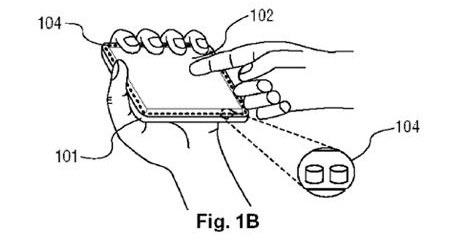When haptic feedback first became a buzzword of the mobile phone industry nearly half a decade ago, many imagined keyboards that would rise up out of the glass on smartphones to meet our fingertips. What we got instead were devices that faintly shook in a general sort of way whenever you tapped their software keys, but a new patent secured by Apple today (and spotted by AppleInsider) looks to improve on those crude designs.
For the sake of improved haptic feedback accuracy, Apple’s patented system uses a minimum of two actuators to provide vibration feedback, with one originating a pulse and one create a second vibration to essentially knock out the first at a specific location, thereby localizing it. This could make sure that a multitouch device could provide localized haptic feedback for any virtual button on its display, instead of just with a few actuators placed under pre-defined, commonly used spots like beneath a home button, as it is currently handled.
Apple doesn’t use haptics on its iPhone, even though the trick has been picked up by nearly every major Android manufacturer out there at some point or another. In fact, at this point I think it’s fair to say that haptic response from keys might strike many consumers as a characteristically Android feature, were they forced to stop and think about it. But Apple’s method could make it seem like vibration response is coming from as fine a point as a specific software key on a keyboard, meaning it would in theory come far closer to the sci-fi interpretation of what haptics are mentioned above than any existing system.
This patent adds to a number of others held by Apple for haptic feedback, and was first filed in 2009. The company continues to play coy about actually using its tech in devices, but likely for good reason: there’s a battery cost and as-is, implementations are sloppy and don’t add much to the overall experience. But as with other tech that Apple has adopted “late” compared to the competition, I still think there’s a chance we’ll see in this used in future shipping iPhones and iPads once the Mac maker can guarantee a worthwhile user experience.
